#mary cochran
Explore tagged Tumblr posts
Text


16 notes
·
View notes
Text

10 DAYS LEFT to Starlight Stage’s 9th Anniversary
featuring Lady Twinkle (Hijiri Mochizuki, Mary Cochran)
19 notes
·
View notes
Text
DAY 10

The character randomly chosen today is Mary Cochran! Mary is a girl who moved from San Fransisco to Japan in order to pursue fame as an idol. Mary has very noble and fashionable tastes, and wants to be treated as a mature lady. However, at the end of the day she is still a child who gets lonely, homesick, and doesn't understand things about Japan and the idol industry.
FUN FACT: Mary is comparatively the tallest of all of the cinderella girls child idols, being taller than some characters that are at least 5 years older than her, such as Akane Hino.
i think this came out cute. i've been doing this for 10 days now, i would say that i can't believe it but we still have so many days to go. i have been having a lot of fun drawing so far though.
see ya!
bonus time



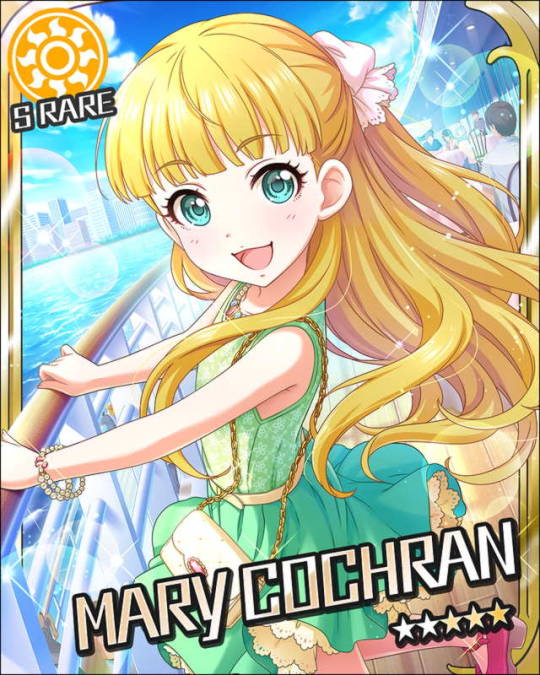





7 notes
·
View notes
Text
yuh

#idolmaster#idolmaster cinderella girls#imas#mary cochran#akagi miria#mai fukuyama#nina ichihara#koharu koga#koseki reina#kusakabe wakaba#matoba risa#hikaru banjos#narumiya yume#ohnuma kurumi#yukumi sajón#sakurai momoka#sasaki chie#tachibana arisu#yanase miyuki#yokoyama chika#。◕`ヮ´◕。#ryuzaki kaoru
2 notes
·
View notes
Text


10 notes
·
View notes
Text
Some thoughts on the topic of Byronism, Byronic Heroes, Byron himself, and Mr. Darcy, Mr. Rochester, and their respective authors...
This was inspired after I was tagged in a post (thank you @bethanydelleman !) asking whether Mr. Darcy should be considered a Byronic Hero or not. I start with my response before delving off, but I refer back at the end and it all ties in.
On Mr. Darcy: to Byronic, or not to Byronic? That is the question...
Whether or not Mr. Darcy should be considered a Byronic Hero is a complex question, as is the concept of the Byronic Hero itself.
I think there two versions of Darcy, and general pop culture tends to conflate them. There is Misunderstood Darcy (pre-"redemption" arc; aka what many think of him pre-Elizabeth's discovery of his true personality) and then there is True Darcy (post-"redemption" arc; "oh he's not rude, just socially awkward and proud"). Misunderstood Darcy has aspects of the Byronic, whereas True Darcy isn't Byronic at all.
Is Darcy Byronic? I recognize that he has Byronic elements that would make the general populace view him as Byronically aligned, so it doesn't bother me too much if people call him such, but without fully going into the debateable qualifications of the Byronic Hero, I don't think he is truly Byronic.
My interpretation of "Byronic" as a concept:
"Byronic" is not an easily defined term. A lot of academics have their own preferred methods of classifying the Byronic and there is no one fixed definition or interpretation. "Byronic" originally referred, of course, to the themes and tropes presented in the characters of Byron, who was one of the best-selling and most influential writers of the 1800s.
However, even applying the term "Byronic" solely to Byron's own corpus is an act of over-generalization. Many of Byron's purported "Byronic Heroes" are drastically different from each other or have little in common, as Byronist Peter Cochran noted in his review of Atara Stein's "The Byronic Hero in Film, Fiction and Television" (https://petercochran.files.wordpress.com/2012/07/stein-green-lapinski-ii.pdf).
I believe there are two main types of Byronic Hero: the Broad Byronic and the Byronist's Byronic.
The Broad Byronic is the modern pop cultural conception of Byronism which has been applied to practically every rebellious anti-hero. You can find thousands of articles analyzing why thousands of characters are or aren't Byronic, from Jack Sparrow to Batman to Luke Skywalker and ad infinitum. If you try hard enough, anything can be Byronic.
The Byronist's Byronic is like the Orthodox Byronic, the more traditional sense of the term. Academics who take the stritcer Byronist's Byronic approach mainly focus on Byron's direct literary descendants, like the Brontës and Pushkin, who were thoroughly obsessed with Byron and whose works/characters are directly and obviously inspired by Byron's own works. Heathcliff and Eugene Onegin are the most commonly cited examples and are Byronic by all standards.
Over time, "Byronic" has taken on a life of its own, leading to what I dubbed as "the Broad Byronic." I personally believe there is sort of a Byronic spectrum wherein I would place Heathcliff on one end and maybe Mr. Rochester on the other, considering his salvation plotline, which I feel is huge to his character and which Heathcliff lacks (as he openly declares at the end, he has no regrets for his actions).
Peter Cochran's interpretation of the Byronic Hero
Peter Cochran was a writer, professor, & one of the best Byronists (scholars of Byron) & I often defer to his opinion. His website is a haven for Byronism. His interpretation of the Byronic Hero is very much representative of the orthodox Byronist's Byronic.
In his essay "Byron's 'Turkish Tales': An Introduction," Cochan provides a brief analysis of the Byronic Hero, which I have sectioned out the most relevant parts of:
"Much has been written about him; what few writers say is that he has so many facets that it's misleading to treat him as a single archetype. [..] The Byronic hero is a human dead-end. He is never successful as a warrior or as a politician [..] he is never successful as a lover. [..] The Byronic Hero is never a husband, never a father, and never a teacher [..] He bequeaths nothing to posterity, and his life ends with him. He is to be contrasted with the Shakespearean tragic hero, who has to be something potentially life-affirming, such as a father (Lear) or a witty conversationalist (Hamlet) or a great soldier (Macbeth, Coriolanus, Antony) or a lover (Romeo, Antony). If they were not such excellent people, their stories would not be tragic. The Byronic Hero is not tragic: he's just a failure, and leads on to the Superfluous Man of Russian literature - as Pushkin demonstrated, when he created the Byronically-fixated Eugene Onegin. [..] The Byronic Hero must never be witty, or be brought in contact with a critical intelligence [..] if he were, his tale would lose its imagined grandeur [..] In his gloom, failure, and rejection of humour The Byronic Hero aligns not with the heroes of Shakespearean tragedy but with the villains of Shakespearean comedy: Shylock, Malvolio, and Jacques. [..] I would suggest that The Byronic Hero is either a closet gay, or a poorly-adjusted bisexual - a problem that Byron would have known all about."
On Mr. Rochester and Mr. Darcy
In his introduction to Charlotte Bronte's Jane Eyre: Modern Critical Interpretations, legendary literary critic Harold Bloom explained that Mr. Rochester is Charlotte Brontë taking the Byronic Hero, killing him, and then rebirthing him. I fully agree with Bloom's interpretation:
"[Rochester's] transformation heralds the death of the Byronic hero [..] Rochester is, in this sense, a pivotal figure; marking the transition from the Romantic to the modern hero [..]"
I would argue that what Austen does to Mr. Darcy is a lighter, pre-Byronic attempt at doing what Brontë did with her transformation of the Byronic in Mr. Rochester. Women growing to sympathize with rude men and then (directly or indirectly) inspiring them to change for the better. Women taking the Byronic and not just going "I can fix him," but instead "I'll tell him off, and then maybe he'll fix himself." Like Darcy, Rochester has two versions, pre-redemption and post-redemption. This is not Byronic, but their pre-redemption selves are, with Mr. Rochester being much, much more so than Darcy, and being considered an archetypal Byronic Hero (rightfully so in my opinion, his come-to-God ending aside).
Also, what Darcy and Rochester are redeemed for differs greatly; I'm not equating their moral or personal failures, and I know that Rochester clearly has more of them (if any anti-Rochester, pro-Darcy fan is out there, pls don't kill me for comparing them).
On Austen and Byron:
Austen started writing P&P when Byron was 8-years-old, so she definitely wasn't influenced by the actual Byron in creating Mr. Darcy. However, Austen did read Byron's work later on, or at least his poem The Corsair, which was his best-selling work at the time and which is one of his most cliché "Byronic" works. She did write some works, like Emma and Persuasion, after reading The Corsair, but I haven't read these yet and I'm not the biggest Austen scholar, so I don't know if she was ever actually influenced by Byron or not. I'm positive that people have analyzed this before. Lots has been written on Austen/Byron. They also shared a publisher, though they never met.
On Byronic (the writer) VS Byronic (the writer's characters):
To further confuse us, "Byronic" by its literal definition can refer to the Byronic Hero OR Byronic as in Byron the Man. Many conflate these things, but they are separate. This adds to the case of the Broad Byronic. Many of Byron's contemporaries created characters that were direct and obvious tributes or parodies of him, including Mary Shelley's The Last Man, Percy Shelley's Julian and Maddalo, and Thomas Love Peacock's Nightmare Abbey. They all knew Byron personally. Mary Shelley openly put Byron into several of her novels, as explained in "Byron and Mary Shelley" by Ernest Lovell Jr. and "Unnationalized Englishmen in Mary Shelley's Fiction" by William Brewer. Other notable examples of this are Caroline Lamb's Glenarvon (Lamb was Byron's ex) and Dr. John Polidori's The Vampyre (Polidori was Byron's doctor) in which both titular characters were/are clearly known by readers to be caricatures of Byron. The Vampyre was the first vampire novel, and was not only a caricature of Byron but also based on Byron's short story Augustus Darvell. So all modern "Byronic" vampires, including Dracula, are really Byronic as in Byron the Man, although they sometimes may overlap with the Byronic Hero. As I said, easily confusing!
As many academics (and Lord Byron himself) have noted, many of Byron's fans wrongly conflated his characters with himself. Although many of Byron's works were indeed semi-autobiographical, he himself said that they were not intended as actual depictions of himself, and that he was annoyed when people thought so. Many fans who met him would write they were shocked to find he was nothing like the Byronic Heroes of his works. He was humorous, he smiled often, he was somewhat of a dandy and much of a rake (self-confessedly), he was an aristocrat, he was considered by many to be effeminate, etc. -- all elements that are not typically expected of the Byronic Hero.
In reference to his drama The Deformed Transformed (which contains the characters Satan and Caesar) Mary Shelley wrote to him in a letter:
"The Critics, as they used to make you a Childe Harold, Giaour, & Lara all in one, will now make a compound of Satan & Caesar to form your prototype, & your 600 firebrands in Murray's hands will be in costume." [John Murray was Byron's publisher]
Here, Mary mentions how many of Byron's readers expected him to be just like his characters Harold, Giaour, & Lara, who fans assumed were his self-insert characters, as they each had strong similarities. However, these characters were more similar to "alter-egos" than actual "self-portraits." My personal interpretation is that Byron was writing these very similar dark anti-heroes and villains in order to channel the darker aspects of his subconscious, or what Jung would call his Shadow Self, to try to purge or subdue it. Though he lived before the field of psychology officially existed, Byron was very interested in all things psychological, and he used his writing as a method of self-therapy (see: Touched with Fire written by psychologist Kay Jamison, which contains one of the most thorough & reliable psychoanalyses of him).
As Bloom explains in the essay I mentioned, and as countless other academics have explained, Charlotte Brontë and many other women in the early 1800s were obsessed with Byron and his works. Byron's English-speaking fan base has always been primarily female, especially in the beginning of his career. Byron's fans wrote him letters revealing their differing interpretations of him and his Byronic Heroes (but again, most didn't really differentiate between the two).
Likewise, I think the Brontë sisters may have conflated Byron with his Byronic Heroes. Mr. Rochester is such a strong example of Byron the Man and has so many similarities to him that when reading Jane Eyre I felt like I was reading Lord Byron fanfiction. It's clear that Charlotte Brontë was familiar with his biography. For example (one of countless), in chapter 17 Rochester sings what he calls "a Corsair song" -- as I mentioned earlier, The Corsair was one of Byron's greatest hits, and Jane Eyre is set around the time The Corsair was published, and Byron also wrote songs and was also known for his good voice.
Although the Brontë sisters were each influenced by him, they took their own individual spins on the Byronic, and their works reveal the dynamicism of these themes. In my opinion, Emily employs the Byronist's Byronic most raw and faithfully (and maybe even takes it further), Charlotte punishes, redeems, and transforms the Byronic with much influence from Byron the Man, and Anne presents the Byronic most critically and realistically, asking "what if the Byronic Hero were real, and really got married -- what would that look like?" and having perhaps the most (Broadly) Byronic heroine ever, who is also later redeemed by the end, and has her veil of Byronic mystery removed much like Darcy did.
#lord byron#byronism#byronic hero#mr rochester#charlotte brontë#criticism#literary criticism#analysis#my analysis#my essays#harold bloom#mr darcy#byron#byronic#literature#english literature#romanticism#mary shelley#peter cochran#jane austen#pride and prejudice#jane eyre#the brontes#my writing
112 notes
·
View notes
Text
Happy National Girls and Women in Sports Day 2024!
Happy National Girls and Women in Sports Day! In celebration of this day, here are a whole bunch of books that center queer girls and women in sports! (For even more recs, check out 2022‘s post!) Fiction You Don’t Have a Shot by Racquel Marie Valentina “Vale” Castillo-Green’s life revolves around soccer. Her friends, her future, and her father’s intense expectations are all wrapped up in the…

View On WordPress
#Anita Kelly#Basketball#Boxing#Cleat Cute#Curling#Female Athletes#Fire & Ice#Hockey#How You Get the Girl#In the Ring#Jennifer Dugan#Karmen Lee#Kate Cochrane#Kelly Farmer#Love and Sportsball#Meka James#Meryl Wilsner#Playing for Keeps#Rachel Spangler#Racquel Marie#Roller Derby#Running#Sierra Isley#Soccer#Sports Romance#The 7-10 Split#Wrestling#You Don&039;t Have a Shot
23 notes
·
View notes
Photo



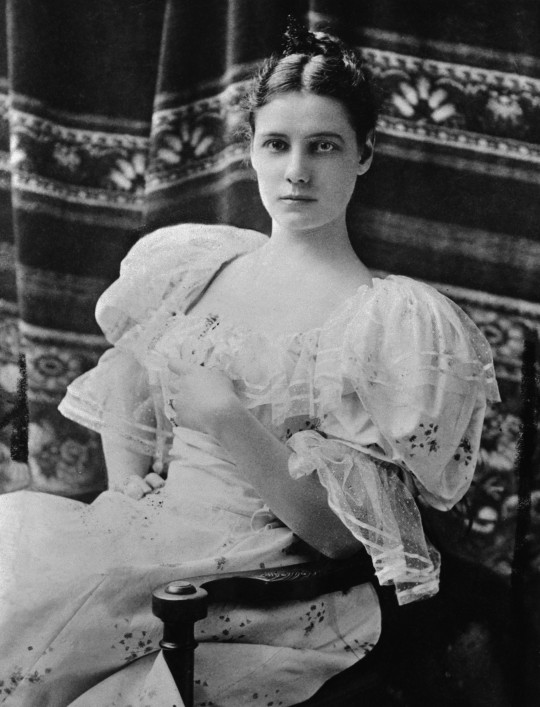




Elizabeth Cochran was born on May 5, 1864 in Cochran’s Mills, Pennsylvania. The town was founded by her father, Judge Michael Cochran. Elizabeth had fourteen siblings. Her father had ten children from his first marriage and five children from his second marriage to Elizabeth’s mother, Mary Jane Kennedy.
Michael Cochran’s rise from mill worker to mill owner to judge meant his family lived very comfortably. Unfortunately, he died when Elizabeth was only six years old and his fortune was divided among his many children, leaving Elizabeth’s mother and her children with a small fraction of the wealth they once enjoyed. Elizabeth’s mother soon remarried, but quickly divorced her second husband because of abuse, and relocated the family to Pittsburgh.
Elizabeth knew that she would need to support herself financially. At the age of 15, she enrolled in the State Normal School in Indiana, Pennsylvania, and an added an “e” to her last name to sound more distinguished. Her plan was to graduate and find a position as a teacher. However, after only a year and a half, Elizabeth ran out of money and could no longer afford the tuition. She moved back to Pittsburgh to help her mother run a boarding house.
In 1885, Elizabeth read an article in the Pittsburgh Dispatch that argued a woman’s place was in the home, “to be a helpmate to a man.” She strongly disagreed with this opinion and sent an angry letter to the editor anonymously signed “Lonely Orphan Girl.”
The newspaper’s editor, George A. Madden, was so impressed with the letter that he published a note asking the “Lonely Orphan Girl” to reveal her name. Elizabeth marched into the Dispatch offices and introduced herself. Madden immediately offered her a job as a columnist. Shortly after her first article was published, Elizabeth changed her pseudonym from “Lonely Orphan Girl” to “Nellie Bly,” after a popular song.
Elizabeth positioned herself as an investigative reporter. She went undercover at a factory where she experienced unsafe working conditions, poor wages, and long hours. Her honest reporting about the horrors of workers’ lives attracted negative attention from local factory owners. Elizabeth’s boss did not want to anger Pittsburgh’s elite and quickly reassigned her as a society columnist.
To escape writing about women’s issues on the society page, Elizabeth volunteered to travel to Mexico. She lived there as an international correspondent for the Dispatch for six months. When she returned, she was again assigned to the society page and promptly quit in protest.
Elizabeth hoped the massive newspaper industry of New York City would be more open-minded to a female journalist and left Pittsburgh. Although several newspapers turned down her application because she was a woman, she was eventually given the opportunity to write for Joseph Pulitzer’s New York World.
In her first act of “stunt” journalism for the World, Elizabeth pretended to be mentally ill and arranged to be a patient at New York’s insane asylum for the poor, Blackwell’s Island. For ten days Elizabeth experienced the physical and mental abuses suffered by patients.
Elizabeth’s report about Blackwell’s Island earned her a permanent position as an investigative journalist for the World. She published her articles in a book titled 10 Days in A Mad House. In it, she explained that New York City invested more money into care for the mentally ill after her articles were published. She was satisfied to know that her work led to change.
Activist journalists like Elizabeth—commonly known as muckrakers—were an important part of reform movements. Elizabeth’s investigations brought attention to inequalities and often motivated others to take action. She uncovered the abuse of women by male police officers, identified an employment agency that was stealing from immigrants, and exposed corrupt politicians. She also interviewed influential and controversial figures, including Emma Goldman in 1893.
The most famous of Elizabeth’s stunts was her successful seventy-two-day trip around the world in 1889, for which she had two goals. First, she wanted to beat the record set in the popular fictional world tour from Jules Verne’s Around the World in Eighty Days. Second, she wanted to prove that women were capable of traveling just as well as—if not better than—men. Elizabeth traveled light, taking only the dress she wore, a cape, and a small traveler’s bag. She challenged the stereotypical assumption that women could not travel without many suitcases, outfit changes, and vanity items. Her world tour made her a celebrity. After her return, she toured the country as a lecturer. Her image was used on everything from playing cards to board games. She recounted her adventures in her final book, Around the World in 72 Days.
In 1895, Elizabeth retired from writing and married Robert Livingston Seaman. Robert was a millionaire who owned the Iron Clad Manufacturing Company and the American Steel Barrel Company. When Robert died in 1904, Elizabeth briefly took over as president of his companies.
In 1911, she returned to journalism as a reporter for the New York Evening Journal. She covered a number of national news stories, including the Woman Suffrage Parade of 1913 in Washington, D.C. Elizabeth often referred to suffrage in her articles, arguing that women were as capable as men in all things. During World War I, she traveled to Europe as the first woman to report from the trenches on the front line.
Although Elizabeth never regained the level of stardom she experienced after her trip around the world, she continued to use her writing to shed light on issues of the day. She died of pneumonia on January 27, 1922.
#nellie bly#women's history#feminism#journalism#history of journalism#social justice#women's suffrage#progressive#women's rights
222 notes
·
View notes
Text
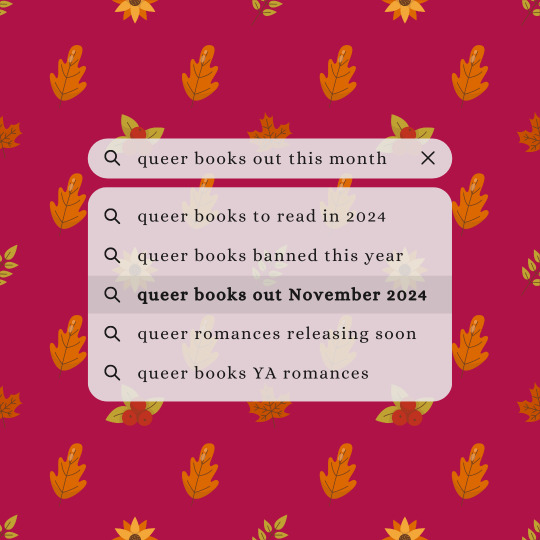
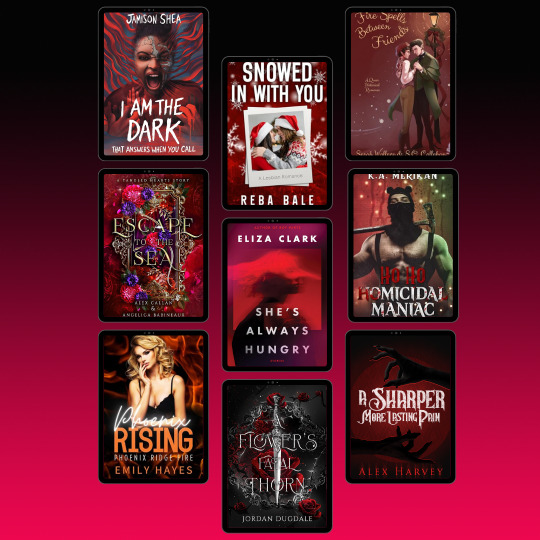
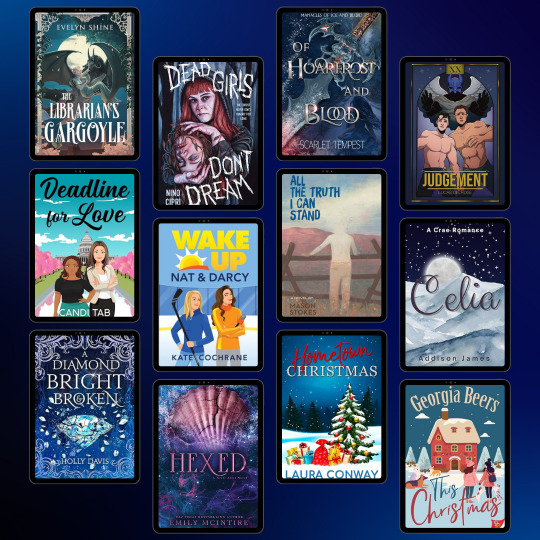

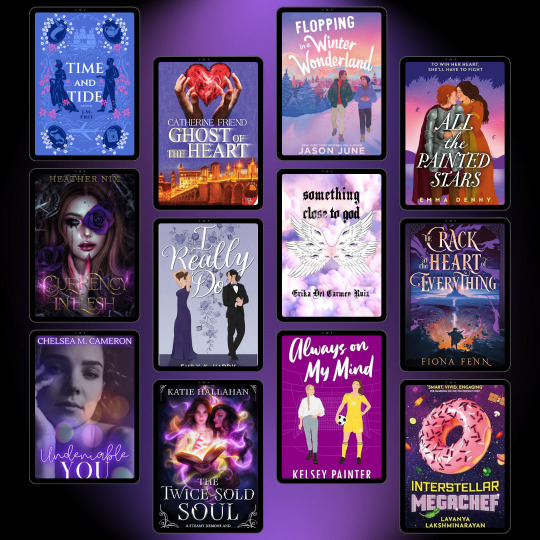

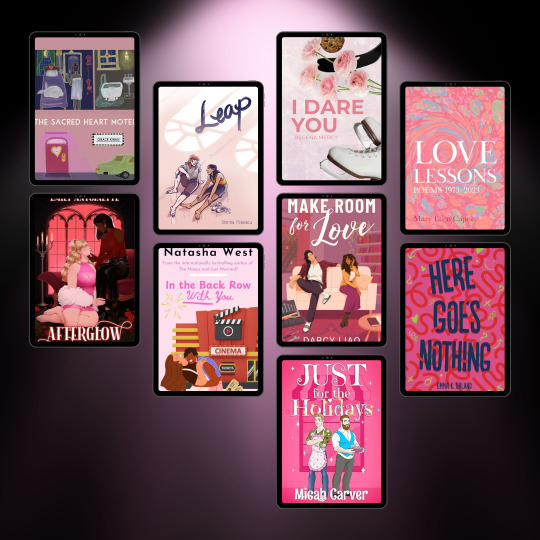
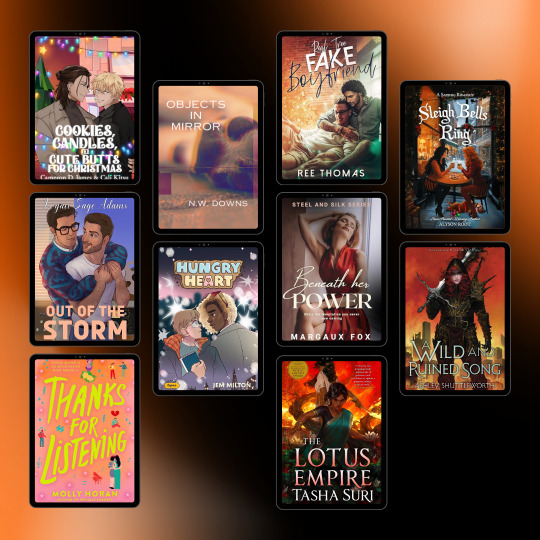
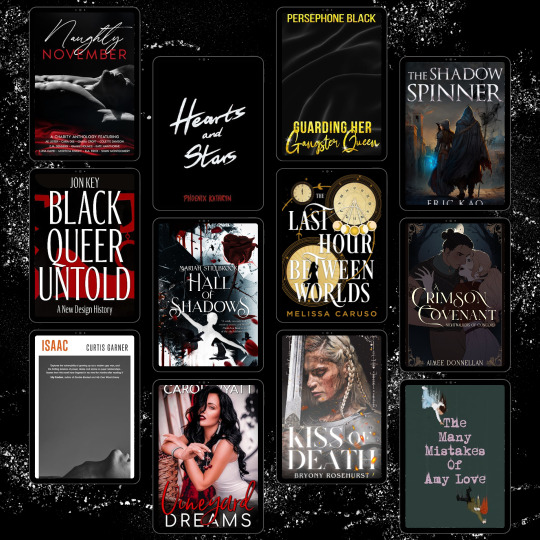
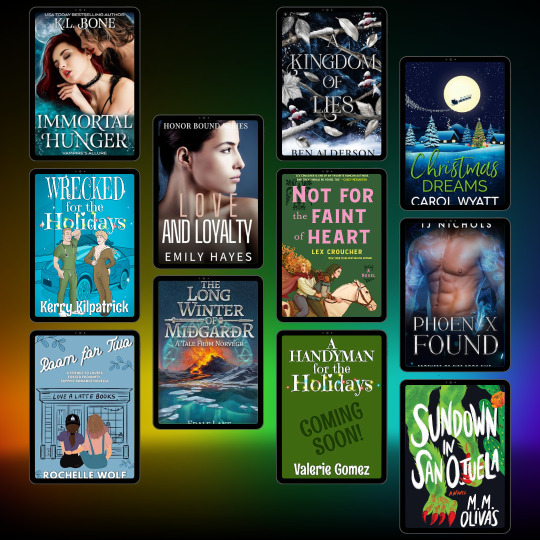
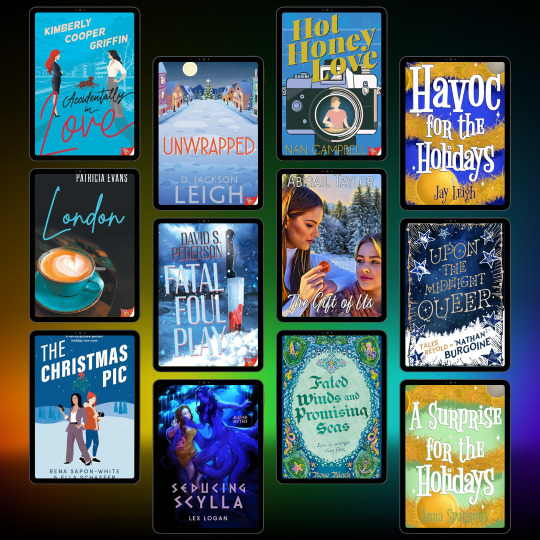
🌈 Queer Books Coming Out in November 2024 🌈
🌈 Good morning, my bookish bats! Here are a FEW of the stunning, diverse queer books you can add to your TBR before the year is over. Happy reading!
❓What was the last queer book you read?
[ Release dates may have changed. ]
❤️ I Am the Dark That Answers When You Call - Jamison Shea 🧡 Snowed in With You - Reba Bale 💛 Fire Spells Between Friends - Sarah Wallace & S.O. Callahan 💚 Ho Ho Homicidal Maniac - K.A. Merikan 💙 Escape to the Sea - Alex Callan & Angelica Babineaux 💜 She's Always Hungry - Eliza Clark 💛 Phoenix Rising - Emily Hayes 💙 A Flower's Fatal Thorn - Jordan Dugdale 💜 A Sharper, More Lasting Pain - Alex Harvey-Rivas
❤️ The Librarian's Gargoyle - Evelyn Shine 🧡 Dead Girls Don't Dream - Nino Cipri 💛 Of Hoarfrost and Blood - Scarlet Tempest 💚 Judgement - Lucas Delrose 💙 Deadline for Love - Candi Tab 💜 Wake Up, Nat & Darcy - Kate Cochrane ❤️ All the Truth I Can Stand - Mason Stokes 🧡 Celia - Addison James 💛 A Diamond Bright and Broken - Holly Davis 💙 Hexed - Emily McIntire 💜 Hometown Christmas - Laura Conway 🌈 This Christmas - Georgia Beers
❤️ Suite Heart - Jade Winters 🧡 We All Fall - Arden Coutts 💛 Taiwan Travelogue - Yáng Shuāng-zǐ 💚 Pit Stop - L.M. Bennett 💙 The Damaged Hearts Bargain - Sienna Waters 💜 War of Night - Greyson Black & E. Scott Clevenger 🧡 I'll be Boned for Christmas - Katherine McIntyre 💜 All You Want for the Holidays - Quinton Li 🌈 Queer as Folklore - Sacha Coward
❤️ Time and Tide - J.M. Frey 🧡 Ghost of the Heart - Catherine Friend 💛 Flopping in a Winter Wonderland - Jason June 💚 All the Painted Stars - Emma Denny 💙 Currency in Flesh - Heather Nix 💜 I Really Do - Emily K. Hardy ❤️ Something Close to God - Erika del Carmen Ruiz 🧡 The Crack at the Heart of Everything - Fiona Fenn 💛 Undeniable You - Chelsea M. Cameron 💙 The Twice-Sold Soul - Katie Hallahan 💜 Always on My Mind - Kelsey Painter 🌈 Interstellar MegaChef - Lavanya Lakshminarayan
❤️ Don't Break Character - Jules Landry 🧡 Rani Choudhury Must Die - Adiba Jaigirdar 💛 Remnants of Filth: Yuwu - Rou Bao Bu Chi Rou 💚 Sugar, Spice, and Christmas Nice - Anne Hagan 💙 The Wishing Tree - Barbara Winkes 💜 Love on Moonlight Lake - Adriana Sargent ❤️ Mistletoe Motel - Lise Gold 🧡 The Royal They - KJ Sinclair 💛 My So-Called Family - Gia Gordon 💙 Frosted by the Girl Next Door - Aurora Rey & Jaime Clevenger 💜 The Star-Crossed Empire - Maya Darjani 🌈 A Hard Fit - Jennifer Moffatt
❤️ The Sacred Heart Motel - Grace Kwan 🧡 Leap - Simina Popescu 💛 I Dare You - Regena Mercy 💚 Love Lessons - Mary Ellen Capek 💙 Afterglow - Emily Antoinette 💜 In the Back Row With You - Natasha West ❤️ Make Room for Love - Darcy Liao 🧡 Here Goes Nothing - Emma K. Ohland Just for the Holidays - Micah Carver
❤️ Cookies, Candles, and Cute Butts for Christmas - Cameron D. James & Cali Kitsu 🧡 Objects in Mirror - N.W. Downs 💛 Sleigh Bells Ring - Alyson Root 💚 Real Tree / Fake Boyfriend - Ree Thomas 💙 Out of the Storm - Logan Sage Adams 💜 Hungry Heart - Jem Milton ❤️ A Wild and Ruined Song - Ashley Shuttleworth 🧡 Beneath Her Power - Margaux Fox 💛 Thanks for Listening - Molly Horan 🌈 The Lotus Empire - Tasha Suri
❤️ Naughty November - Anthology 🧡 Hearts and Stars - Phoenix Kathryn 💛 Guarding Her Gangster Queen - Persephone Black 💚 The Shadow Spinner - Eric Kao 💙 Black, Queer, and Untold - Jon Key 💜 Hall of Shadows - Mariah Stillbrook ❤️ The Last Hour Between Worlds - Melissa Caruso 🧡 A Crimson Covenant - Aimee Donnellan 💛 Isaac - Curtis Garner 💙 Vineyard Dreams - Carol Wyatt 💜 Kiss of Death - Bryony Rosehurst 🌈 The Many Mistakes of Amy Love - RA Hunter
❤️ Accidentally in Love - Kimberly Cooper Griffin 🧡 Unwrapped - D. Jackson Leigh 💛 Hot Honey Love - Nan Campbell 💚 Havoc for the Holidays - Jay Leigh 💙 London - Patricia Evans 💜 Fatal Foul Play - David S. Pederson ❤️ The Gift of Us - Abigail Taylor 🧡 Upon the Midnight Queer - 'Nathan Burgoine 💛 The Christmas Pic - Rena Sapon-White & Ella Schaefer 💙 Seducing Scylla - Lex Logan 💜 Fated Winds and Promising Seas - Rose Black 🌈 A Surprise For The Holidays - Anna Sparrows
❤️ Immortal Hunger - KL Bone 🧡 Love and Loyalty - Emily Hayes 💛 A Kingdom of Lies - Ben Alderson 💚 Christmas Dreams - Carol Wyatt 💙 Wrecked for the Holidays - Kerry Kilpatrick ❤️ Not for the Faint of Heart - Lex Croucher 🧡 Phoenix Found - T.J. Nichols 💛 Room for Two - Rochelle Wolf 💙 The Long Winter of Miðgarðr - Edale Lan 💜 A Handyman for the Holidays - Valerie Gomez 🌈 Sundown in San Ojuela - M.M. Olivas
#books#new books#book releases#queer#queer books#queer romance#queer pride#queer community#read queer all year#book reader#booklr#book reading#book list#book release#batty about books#battyaboutbooks#bisexual romance#bisexual visibility#bisexuality#bi books#sapphic books#sapphic romance#gay romance#gay pride#gay#wlw romance#wlw fiction#wlw
53 notes
·
View notes
Text
Queer Sports Romance Books Recs For Pride Month 🌈 (all are books I've either read or currently have on my own tbr list)
Hockey
Rookie Recovery (Bobcat Boys #1) by Jemma Croft and Lex Veia [mlm]
Vancouver Orcas interconnected series by Amy Aislin [mlm]
Hometown Hero (Whistleport Hockey #1) by Declan Rhodes [mlm]
Hockey Guys interconnected series by Sarina Bowen [mlm]
Prove It by Stephanie Hoyt [mlm]
Fake Boyfriend interconnected series by Eden Finley [mlm]
Caught off Guard by Catherine Cloud [mlm]
Chicago Thunder interconnected series by Jodi Oliver [mlm]
Don't Look Down (Best Laid Plans #1) by Jessica Ann [mlm]
Hockey Ever After interconnected series by Ashlyn Kane and Morgan James [mlm]
Love & Other Inconveniences by Catherine Cloud [mlm]
Time to Shine by Rachel Reid [mlm]
Relationship Goals interconnected series by Brigham Vaughn [mlm]
Light Up the Lamp by Kit Oliver [mlm]
Puckboys interconnected series by Eden Finley and Saxon James [mlm]
Hot Shot (Orlando Storm #1) by Marissa James [mlm]
Breakaway partially-interconnected series by E.L. Massey [mlm]
Delay of Game interconnected series by Hannah Henry [mlm]
Offsides interconnected series by J.J. Mulder [mlm]
Roughing (Portland Seabirds #1) by Michaela Grey [mlm]
Stick Side interconnected series by Amy Aislin [mlm]
Let's Do This (IFU Hockey #1) by Loren Leigh [mlm]
CU Hockey interconnected series by Eden Finley and Saxon James [mlm]
Back to Center (Mohegan U Hockey #2) by Ryan Taylor and Joshua Harwood [mlm]
Penalty Box interconnected series by Ari Baran [mlm]
Shenanigans (Brooklyn Hockey #6) by Sarina Bowen [m/f with a bi mc]
The Inside Edge by Ashlyn Kane [mlm]
Icebreaker by A. L. Graziadei [mlm]
Hockey Bois by A.L. Heard [mlm]
Three Is The Luckiest Number by Catherine Cloud [mlm]
Not Over You by Samantha Wayland [mlm]
Wake Up, Nat & Darcy by Kate Cochrane [wlw]
It's a Love/Skate Relationship by Carli J. Corson [wlw]
Off the Bench Duet Series by Kimberly Knight [mlm]
Twincerely Yours by Eden Finley [mlm]
Car Racing
Pole Position by Rebecca J. Caffery [mlm]
Lights Out Series interconnected series by various authors [mlm]
Fast Love (Fast Love #1) by Kerry Lockhart [wlw]
Driven By Passion (Gamble Racing #2) by Renee Dahlia [mlm]
Redline (Redline #1) by Emma Barlowe [mlm]
Furious by Jamie Pacton and Rebecca Podos [wlw]
Bowling
The 7-10 Split by Karmen Lee [wlw]
Baseball
The Prospects by KT Hoffman [mlm]
Batting Style by Louisa Masters [mlm]
You Should Be So Lucky by Cat Sebastian [mlm]
The Smile Has Left Your Eyes by Danielle Dawsen [mlm]
Volleyball
We Got the Beat by Jenna Miller [wlw]
Always More (Sports #1) by Nicole Pyland [wlw]
Roller derby
Mighty Millie Novak by Elizabeth Holden [wlw]
False Start by Santana Knox [wlw]
Basketball
How You Get the Girl by Anita Kelly [wlw]
Love and Sportsball (Atlanta Cannons #1) by Meka James [wlw]
Zone Defense interconnected series by Becca Seymour [mlm]
Fencing
Fence comic series by C.S. Pacat and Joanna the Mad [mlm]
Football
One Last Play by E.B. Neal [mlm]
Coming Out on the Sidelines by Dev Hahn [wlw]
Forward Entry (Sydney Swallows #1) by Aurora Crane [mlm]
The Game (Charleston Condors #2) by Beth Bolden
Atlanta Lightning interconnected series by Riley Hart [mlm]
Fumbled Past (San Diego Seals #2) by Cecelia Storm [mlm]
Onside Kiss (Domingo #1) by Octavia Jensen [mlm]
You Started It (Fan Service Series #3) by Hinsel Meyer [mlm]
Tigers and Devils (Tigers and Devils #1) by Sean Kennedy [mlm]
Roosevelt College interconnected series by Christina Lee [mlm]
You & Me by Tal Bauer [mlm]
Crushing on the Quarterback by Baylin Crow [mlm]
Tennis
Deuce (Tennyson Bend #2) by P.T. Ambler [mlm]
Soccer
You Don't Have a Shot by Racquel Marie [wlw]
Everything for You (Bergman Brothers #5) by Chloe Liese [mlm]
Cleat Cute by Meryl Wilsner [wlw]
Pull Me Under by Zarah Detand [mlm]
The Game Changer (Denver Defiant, #1) by Finley Chuva [wlw]
I Like Me Better by Robby Weber [mlm]
Finding a Keeper (Sports #4) by Nicole Pyland [wlw]
Don't Hate the Player by Shelby Elizabeth [mlm]
Endgame by Zoe Reed [wlw]
Hotshot by Clare Lydon [wlw]
Rugby
Attractive Forces by Jax Calder [mlm]
The Tighthead (Lincoln Knights #1) by Charlie Novak [mlm]
Softball
The Unexpected Dream (Sports #3) by Nicole Pyland [wlw]
Chess
Always the Almost by Edward Underhill [trans boy x boy]
Wrestling
Alondra by Gina Femia [bisexual girl mc]
Lacrosse
Catch and Cradle by Katia Rose [wlw]
Swimming
Tears in the Water Margherita Scialla [LGBTQ+]
Badminton
Shy by Ashish Rastogi [mlm]
#can you tell I greatly enjoy a good hockey romance lmao#sport romance#lgbtq#sport romance books#queer sports#romance books#romance novels#contemporary romance#bookworm#booklr#books and reading#books#book list#queer#book recs#book recommendation#books to read#lgbtq books#bookblr#booktok#book recommendations#reading#pride 2024#booklover#lgbtq community#queer community#lgbtqia#lgbt pride#queer pride#pride month
128 notes
·
View notes
Text


SR/SR+ 【From Sweet Honey】Mary Cochran
FOCUS STAT 6180 VOCAL TOTAL APPEAL 13 440 Skill:「Dear My Darling」 (Encore) For every 15 seconds, there is a 35~52.5% chance to activate the previous skill activated for 5~7.5 seconds Center Skill:「Cinderella Charm」 When you clear a LIVE, you will gain an increase of 32% in terms of FAN GAIN
※ you are able to obtain this card by reaching a certain amount of points/total attendees, or by clearing the EX Missions of certain areas in the 40th LIVE Parade event.
8 notes
·
View notes
Note
Do you have a list of Toyfolk inhabitants?
The Misfits:
Charles "Charlie" Scopp
Dolores "Dolly" Conley
Eleanor
Gabriel "Gabe" Bianco
Jennifer "Jen " Spagnoletti
Maria Martinez
Melissa "Mel" Ray
Pauline "Paul" Carson
Tabitha "Tammy" Yokoi
André?
Others
Apalala
Brendan
Carol
Flo
Morgan
Cadencia Martinez?
Floretta
Phineas Barnum
Romeo "Candlewick"
Hans
Dorothy "Dollie"
"Moonracer"
Anabel
Ayane Takahashi
Eli "Spots" Banas
Hanuman
Hensley
Molly
Octavia
Silus Zelinski
Suzanne "Zanny" 🏥
"Steadfast Tin Soldier"
"Paper Ballerina Doll"
"Babs"
Fan Characters (this list is incomplete)
Alfons
Alma Irons
Amy "Amy Sh-" Shipperton
Artie
Aster
Barnaby Alberto Alexander
Beatrice "Beau" Pierceson
Bene MaCrane
Bill Stanton
Billie "B.B." Oats
Bobbi
Buster Sweetwater
Butch Franklin
Camille "the Professor" Basset
Carlos
Catherine Hammond
Charlie
Conrad Fothergill
Danzel "Dizzy"
Darcy
Davina & Bronnie
Emit
Eddy/Emi
Elizabeth "Liz" 🏥
Emma
Ezekiel "Zeke" Bridgman
Dr. Ernst 🏥
Fanny 🏥
Freddy "Eddy"
Ganda Green
Georgina George
Gretchen
Gwendoline "Gwen"
Heather Rigger
Horace Parker
Iris Nagi
Isabel "Izzy"
Jane Doe
Janice Ridgewalker
Jason Robbs
Jayden Storm
Jennifer
Jester
Jiro Kanedo
Julia, Thomas, James, and Andrea
Kelly
Kelsey Warren
Dr. Lacey Weaver 🏥
Lux Newton
Levy Atan
Lysandra Atwood-Terpsichore
Madeline
Madilyn "Maddie" Hoek
Mal
Marigold Hartford
Margaret "Margie" Bleeker
Margie
Markley Burke
Mars
Marvin
Mary Annette
Maximilian
Melody
Mike
Milo Otis
Min Hu
Monika
Naomi
Nessa
Nonna Macaw
Odelia Pines
Paul Higgins
Peter Rangers
Petra
Pierce Spotson
Dr. Quentin "Q.T." Darling 🏥
Rachel Thompson
Ralph Patrickson
Richard Tarkin
Rocky
Rodney
Roza Egorova
Ryder Cochran
Sam Greenway
Sandy
Scharlachrot
Sheila
Stanley "Stella" Olson
Sylvik
Taylor Seekins
Terra
Thomas Bower
Tracy Corbett
Walter
46 notes
·
View notes
Text
just imagine

#mary cochran#koga koharu#arisu tachibana#idolmaster cinderella girls#imas#idolmaster#the idolm@ster#memes#funny memes#dank memes#。◕`ヮ´◕。
0 notes
Text
Friends, enemies, comrades, Jacobins, Monarchist, Bonapartists, gather round. We have an important announcement:
The continent is beset with war. A tenacious general from Corsica has ignited conflict from Madrid to Moscow and made ancient dynasties tremble. Depending on your particular political leanings, this is either the triumph of a great man out of the chaos of The Terror, a betrayal of the values of the French Revolution, or the rule of the greatest upstart tyrant since Caesar.
But, our grand tournament is here to ask the most important question: Now that the flower of European nobility is arrayed on the battlefield in the sexiest uniforms that European history has yet produced (or indeed, may ever produce), who is the most fuckable?
The bracket is here: full bracket and just quadrant I
Want to nominate someone from the Western Hemisphere who was involved in the ever so sexy dismantling of the Spanish empire? (or the Portuguese or French American colonies as well) You can do it here
The People have created this list of nominees:
France:
Jean Lannes
Josephine de Beauharnais
Thérésa Tallien
Jean-Andoche Junot
Joseph Fouché
Charles Maurice de Talleyrand
Joachim Murat
Michel Ney
Jean-Baptiste Bernadotte (Charles XIV of Sweden)
Louis-Francois Lejeune
Pierre Jacques Étienne Cambrinne
Napoleon I
Marshal Louis-Gabriel Suchet
Jacques de Trobriand
Jean de dieu soult.
François-Étienne-Christophe Kellermann
17.Louis Davout
Pauline Bonaparte, Duchess of Guastalla
Eugène de Beauharnais
Jean-Baptiste Bessières
Antoine-Jean Gros
Jérôme Bonaparte
Andrea Masséna
Antoine Charles Louis de Lasalle
Germaine de Staël
Thomas-Alexandre Dumas
René de Traviere (The Purple Mask)
Claude Victor Perrin
Laurent de Gouvion Saint-Cyr
François Joseph Lefebvre
Major Andre Cotard (Hornblower Series)
Edouard Mortier
Hippolyte Charles
Nicolas Charles Oudinot
Emmanuel de Grouchy
Pierre-Charles Villeneuve
Géraud Duroc
Georges Pontmercy (Les Mis)
Auguste Frédéric Louis Viesse de Marmont
Juliette Récamier
Bon-Adrien Jeannot de Moncey
Louis-Alexandre Berthier
Étienne Jacques-Joseph-Alexandre Macdonald
Jean-Mathieu-Philibert Sérurier
Catherine Dominique de Pérignon
Guillaume Marie-Anne Brune
Jean-Baptiste Jourdan
Charles-Pierre Augereau
Auguste François-Marie de Colbert-Chabanais
England:
Richard Sharpe (The Sharpe Series)
Tom Pullings (Master and Commander)
Arthur Wellesley, 1st Duke of Wellington
Jonathan Strange (Jonathan Strange & Mr. Norrell)
Captain Jack Aubrey (Aubrey/Maturin books)
Horatio Hornblower (the Hornblower Books)
William Laurence (The Temeraire Series)
Henry Paget, 1st Marquess of Anglesey
Beau Brummell
Emma, Lady Hamilton
Benjamin Bathurst
Horatio Nelson
Admiral Edward Pellew
Sir Philip Bowes Vere Broke
Sidney Smith
Percy Smythe, 6th Viscount Strangford
George IV
Capt. Anthony Trumbull (The Pride and the Passion)
Barbara Childe (An Infamous Army)
Doctor Maturin (Aubrey/Maturin books)
William Pitt the Younger
Robert Stewart, 2nd Marquess of Londonderry (Lord Castlereagh)
George Canning
Scotland:
Thomas Cochrane
Colquhoun Grant
Ireland:
Arthur O'Connor
Thomas Russell
Robert Emmet
Austria:
Klemens von Metternich
Friedrich Bianchi, Duke of Casalanza
Franz I/II
Archduke Karl
Marie Louise
Franz Grillparzer
Wilhelmine von Biron
Poland:
Wincenty Krasiński
Józef Antoni Poniatowski
Józef Zajączek
Maria Walewska
Władysław Franciszek Jabłonowski
Adam Jerzy Czartoryski
Antoni Amilkar Kosiński
Zofia Czartoryska-Zamoyska
Stanislaw Kurcyusz
Russia:
Alexander I Pavlovich
Alexander Andreevich Durov
Prince Andrei (War and Peace)
Pyotr Bagration
Mikhail Miloradovich
Levin August von Bennigsen
Pavel Stroganov
Empress Elizabeth Alexeievna
Karl Wilhelm von Toll
Dmitri Kuruta
Alexander Alexeevich Tuchkov
Barclay de Tolly
Fyodor Grigorevich Gogel
Ekaterina Pavlovna Bagration
Ippolit Kuragin (War and Peace)
Prussia:
Louise von Mecklenburg-Strelitz
Gebard von Blücher
Carl von Clausewitz
Frederick William III
Gerhard von Scharnhorst
Louis Ferdinand of Prussia
Friederike of Mecklenburg-Strelitz
Alexander von Humboldt
Dorothea von Biron
The Netherlands:
Ida St Elme
Wiliam, Prince of Orange
The Papal States:
Pius VII
Portugal:
João Severiano Maciel da Costa
Spain:
Juan Martín Díez
José de Palafox
Inês Bilbatua (Goya's Ghosts)
Haiti:
Alexandre Pétion
Sardinia:
Vittorio Emanuele I
Lombardy:
Alessandro Manzoni
Denmark:
Frederik VI
Sweden:
Gustav IV Adolph
64 notes
·
View notes
Text

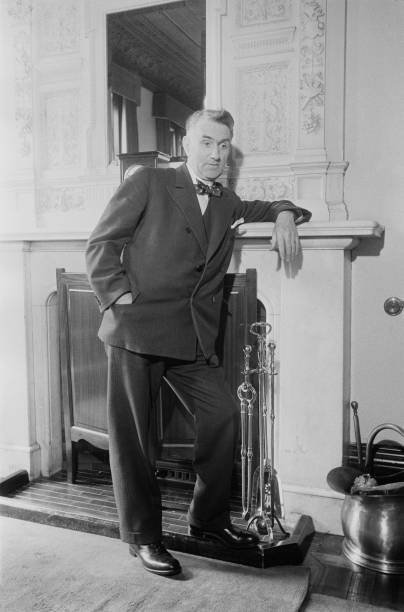
Tom Johnston, one of Scotland’s best known Secretaries of State, was born on November 2nd 1881.
Now and again I bend the rules and cover a politician in my posts, Tom Johnston is such a case, a remarkable man who lived to see the Highlands transformed, bringing electricity to regions who had, until then had very little or none in the years up to Woerld War Two,
Johnston was the son of David Johnston, a grocer, and his wife, Mary Blackwood, he was born in Kirkintilloch in and educated at Lairdsland Public School then at Lenzie Academy.
Tom then entered the University Glasgow where he became interested in politics and stood successfully for a local election in 1903 representing the Independent Labour Party.
In 1906, thanks to inheriting a printing press from a relative, he was able to set up The Forward, a radical weekly paper that reflected his Fabianism and teetotalism. He remained editor until 1933. It was in the early days of running the paper that he matriculated at the University as a mature student aged twenty-three.
In 1907 he continued his education and took a class in Moral Philosophy and gave his address as the Student Settlement, a pioneering student association interested in social improvement. The following year he enrolled for Economics, but he left without graduating.
He married Margaret F. Cochrane in 1914 and they were married for over 50 years, they had two children.
During the The First World War he advocated peace and attacked war profiteers. After the war he stood for parliament, and in 1922 won West Stirlingshire for Labour. The period of his greatest achievement was during the Second World War. Churchill appointed him as secretary of state for Scotland in 1941. He worked with colleagues of all parties to galvanise the Scottish economy on a war footing.
It was Tom Johnston who was instrumental in creating the North of Scotland Hydro- Electric Board, his greatest achievement, handling rural Scotland's resistance and hesitation towards the project intelligently. Until the 1940s, many rural areas of Scotland outwith the Central Belt had little or no electricity supply. There were coal-fired steam-turbine and some diesel-driven power stations serving urban locations.
In the three decades following the Second World War, the Hydro Board's teams of planners, engineers, architects and labourers succeeded in creating an epic succession of electricity generation and distribution schemes that were world-renowned not only for successfully achieving their technical aims in very demanding terrain but for often doing so in an aesthetically inspiring manner. The economic and social benefits thus brought to all the people of Scotland, and especially those in rural areas, were immense and long-lasting
In 1920 he published the History of the Working Classes in Scotland and from 1950 to 1952 he served as President of the Scottish History Society.
The University of Glasgow conferred the degree of Honorary LLD in 1945. In 1948 he was awarded the Freedom of the City of Aberdeen. He was also Chancellor of Aberdeen University from 1951 until his death.
Thomas Johnston died on 5th September 1965 in Milgavie.
18 notes
·
View notes

